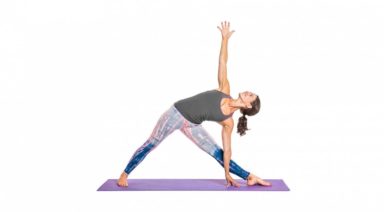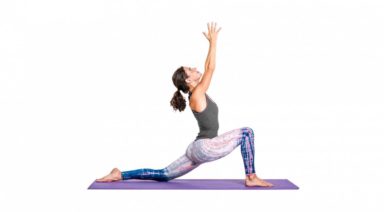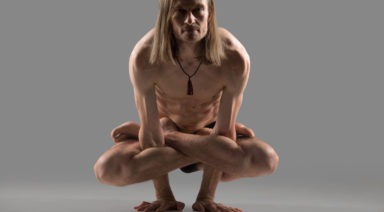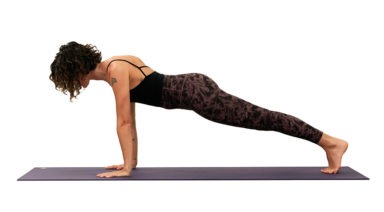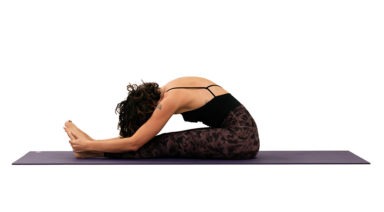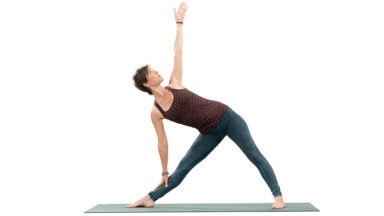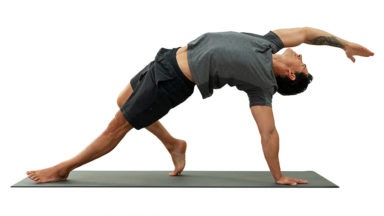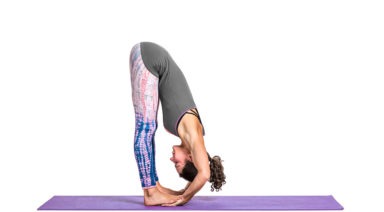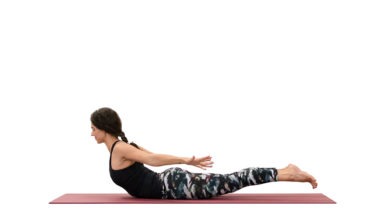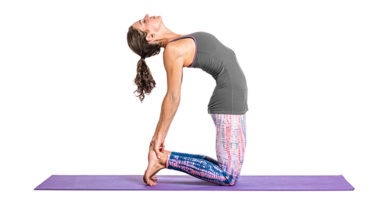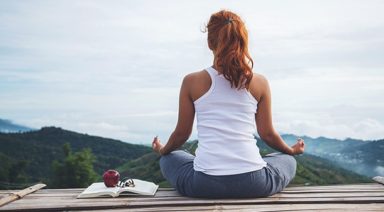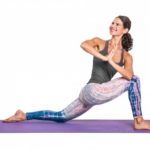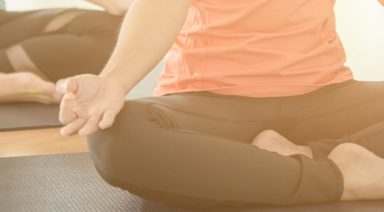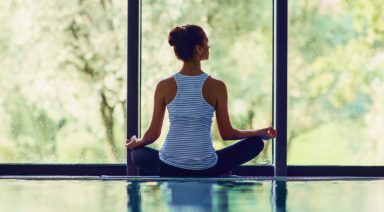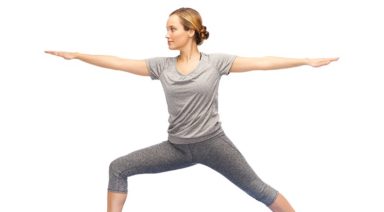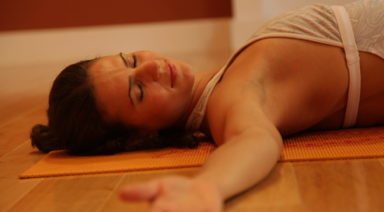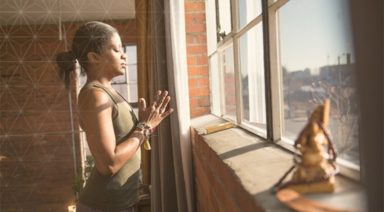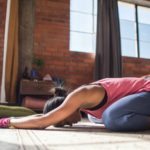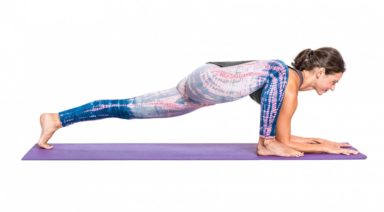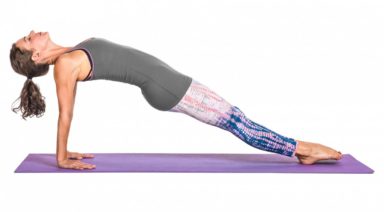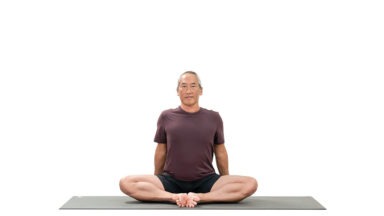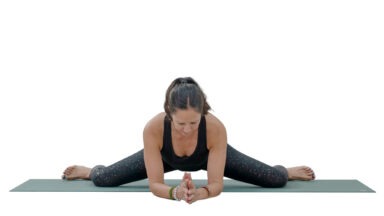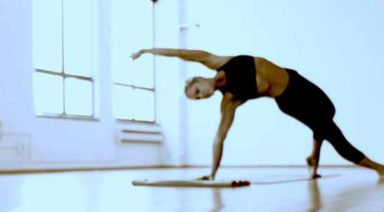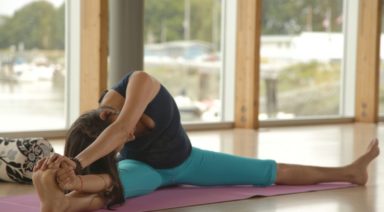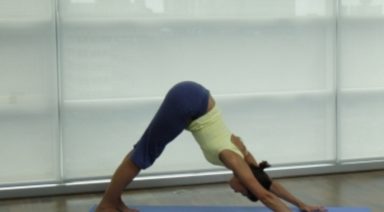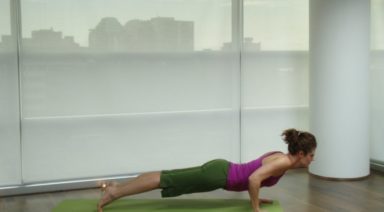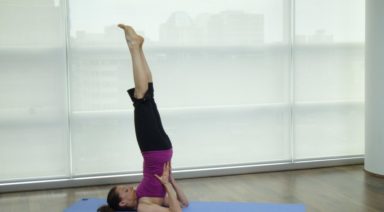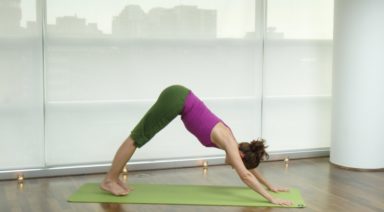A 5-Minute Routine to Improve Your Posture
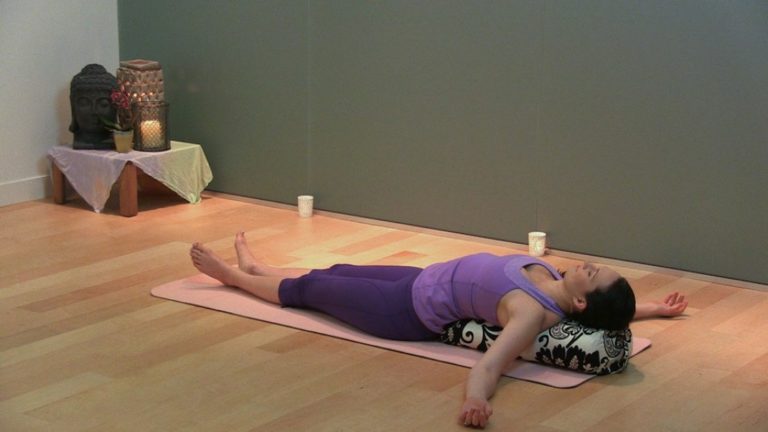
When we think of improving our posture we might think of holding the head high, or rooting evenly into our feet. Maybe we adjust the way we hold our pelvis or lift our chest to gain height. There is one area of our body that often gets neglected – our middle back or thoracic spine. Abused by hours of computer work or texting, our poor thoracic spine is an important part of spinal and full body mobility and when nurtured, can transform the way we hold our body.
A Closer Look at the Middle Back
The thoracic spine is made up of 12 vertebrae and starts at the bottom of the neck and ends at the bottom of the rib cage. Our 12 ribs attach at the back to the thoracic vertebrae and at the front to the sternum (with the exception of our lower “floating” ribs which do not attach at the sternum). Each vertebrae stacks on top of the next connecting via a facet joint which angles up and down. The angle of the joints in the spine affect the motion in each section. In the case of the thoracic there is the most freedom in rotation.
The Hunch
A common posture in the western world is a closed chest, which rounds the upper back. In turn this results in the chin jutting forward to keep our eyes level. The low back takes on additional load as the thoracic spine is no longer architecturally positioned to transfer load effectively from our upper body. Our shoulder range of motion is limited because the scapulae or shoulder blades have to alter their motion in relation to the rounded upper back and closed space at the front of the chest.
Simply spending five minutes a day sending a little love to our thoracic spine can have a trickle down effect improving our whole body alignment.
The 5-minute Thoracic Routine
Cat Cow on Elbows
Come onto your hands and knees, then lower onto your elbows, stacking your elbows under your shoulders. Inhale and lift your head, dropping your heart towards the floor. Exhale reverse the motion, leading with your head, send the space between your shoulder blades up towards the sky. Repeat 10-20 breaths.
Cat Cow Rotation on Elbows
From the same position as above, bring your forearms together in the centre of your mat. Place your right hand behind your head, lightly resting on your skull. As you inhale, twist open to the right, exhale back to centre. Repeat 10 breaths then switch sides, twisting open to the left.
Reverse Sit-up
Keeping your yoga mat rolled up, place it horizontal to your spine. Position yourself so that you are lying over your mat placed around the bottom of your shoulder blades. Support your neck with both hands (skip this one altogether if you have neck pain) and slowly do a tiny back bend over the mat then return to neutral. Slide down to the next vertebrae and repeat, back-bending ever so slightly over the mat. Repeat until you reach the top of the thoracic spine.
Chest Opener
Next turn your rolled mat so it is in line with your spine, the bottom of the mat at the bottom of your shoulder blades as you lie back onto the roll. If your chin is jutting up to the sky, place a small amount of height under your head (which should be supported by the rolled mat) to level out your spine. Open your palms and decide what feels better for your low back–knees bent, or legs extended. Then just breathe.
Walk Proud
Simply taking five minutes out of your day to give your mid-back some attention can go a long way to improving your posture and alignment. It may even relieve that achey feeling so many of us suffer from. Don’t be surprised if you feel a little funny at first–most of us aren’t used to being in alignment. Just enjoy your new open posture.
Yoga for Injury and Trauma
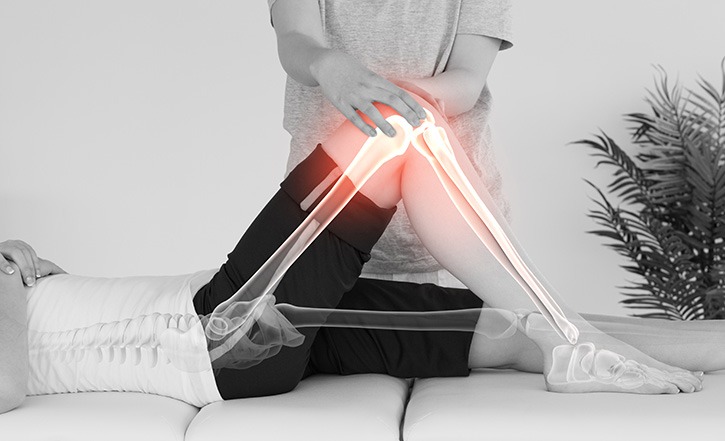
After a traumatic event you need to be discerning to determine when to get moving and grooving again. If you are healing from medical issues, it may be appropriate to ask your physician. When your body and spirit are ready for active healing, your intuition will sense that it’s time to get moving. Listen to your inner voice of wisdom!
Therapeutic Yoga Practices to Get You Moving Again
1. Sun Salutations
Sun salutations bring the energetic quality of the sun into your body. Warmth, growth, energy, lightness, upliftedness.
2. Moon Salutations
Moon salutations bring the cooling, divine feminine, dark-side and circular energy. A complement to sun salutations, done as a flow that circles from the first to last pose in a mandala or a round fluid flow. Go as quickly or slowly as your body wants you to.




